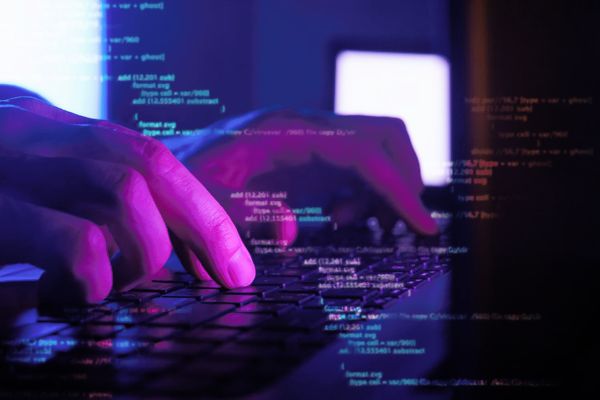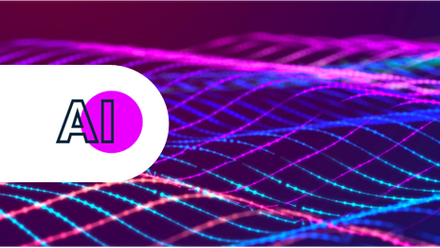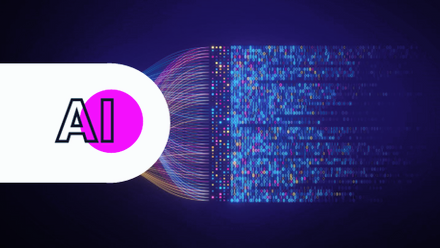An efficiency revolution with computer vision and AI
Over the course of my career working in robotics and automation, I have witnessed the incredible advancements of AI and computer vision firsthand. At Ocado Technology, our approach to these technologies has been to learn fast, constantly experimenting, learning from mistakes, and ultimately pushing the boundaries of what’s possible for our use case. Today, I’d like to share some insights into how some of the most advanced technologies we are building are reshaping the online grocery operation, the challenges we’ve encountered along the way, and what the future holds.
Enhancing operations: computer vision for automation technology
At the core of our automated customer fulfillment centres, hundreds of retrieval bots navigate 3D storage grids, fetching containers filled with the items that customers have ordered. This highly efficient system is orchestrated by an AI-powered “air traffic control” that communicates with each bot in real-time, ensuring seamless operations. However, as with any physical system, occasional mechanical issues arise. This is where one of our applications of computer vision comes into play.
We’ve built advanced AI and computer vision systems which monitor the footage from 360° cameras that cover the whole grid. These cameras are used to detect and locate any bots that require maintenance attention. AI allows us to create exclusion zones around any bots experiencing an issue, minimising disruptions and maintaining the flow of operations.
Another significant advancements we’ve made in the computer vision space is the development of On-Grid Robotic Pick (OGRP) systems. These robotic arms are installed directly on the grid, picking and packing customer orders with precision. The variety of products—up to 50,000 different items—poses a unique challenge, but by using cutting-edge AI and computer vision algorithms, we’ve developed a system that can handle the vast diversity in weight, size, shape, and packaging. Our approach involves deep neural networks, imitation learning, and reinforcement learning, creating a robust and ever-improving system.
Overcoming challenges in integration
Transitioning from a controlled lab environment to real-world operations is one of the most intriguing challenges we’ve faced. In the lab, we simulate realistic conditions, but the sheer scale of production reveals scenarios that are nearly impossible to replicate during testing. Events that occur once in a million instances are rare in the lab but can be frequent enough in production to warrant attention.
To address these challenges, we’ve developed capabilities that augment our systems’ autonomy with human teleoperation. This not only ensures continuous operations but also contributes to the AI’s learning process, enhancing its ability to handle complex tasks over time. Each robot arm benefits from the collective experiences of every other arm in operation, leading to exponential improvements in performance.
Not just efficiency; the customer wins too
Automation is not only about efficiency; it’s also about delivering an exceptional customer experience. Computer vision-powered automation means that products can be picked, packed, and delivered with minimal human error. Our AI-driven inspection models operate independently from our control models, verifying that the correct items and quantities are selected in real-time.
Our adaptive packing algorithms also ensure that products are handled with care, prioritising the safety of fragile items while optimising speed for more durable goods. This balance is continuously refined to meet our retail partners’ specific needs, ensuring that customers receive their orders in optimal condition.
What’s next in the computer vision space?
Looking ahead, we see two major trends shaping the future of automation: broader applicability and lower costs. Machine learning is enabling us to create more generalisable and adaptive systems, capable of handling increasingly complex scenarios. Our OGRP system, for example, can manage tens of thousands of different products, a testament to the power of ML in expanding the capabilities of automation.
Cost reduction is another significant trend. By leveraging ML, we can use off-the-shelf hardware, making advanced automation more accessible and affordable. We’re also exploring the potential of foundational models, which have already transformed natural language processing and image recognition. These models could revolutionise robot control, opening new frontiers in automation and further enhancing our ability to deliver top-tier solutions.
In conclusion, the integration of computer vision with automation technologies is not just a technological advancement; it’s a revolution that is starting to redefine the future of distribution. At Ocado Technology, we’re excited to continue leading this charge, developing innovative solutions that not only enhance operational efficiency but also elevate the customer experience to new heights. The future is exciting, and we’re just getting started.
Dive deeper with more AI insights:
If you're interested in AI adoption you can find more insights on our AI Campaign Week page, here:

Stay up to date with techUK AI Adoption work:
To help promote greater levels of responsible AI adoption, techUK is working alongside its members and key stakeholders across the AI ecosystem to demonstrate the significant benefits of this technology for both the economy and society. The best way to stay up to date with our work is to visit our AI Adoption Hub.
Call for AI Adoption case studies:
As part of techUK’s 2024 AI Campaign Week, we are launching a call for techUK member case studies, to demonstrate how organisations are tackling the barriers to AI adoption to maximise AI's potential. These case studies will be showcased to UK organisations that are also embarking on their AI adoption journeys, providing them with practical examples and insights to guide their Putting AI into Action efforts. Learn more here.
techUK - Seizing the AI Opportunity
The UK is a global leader in AI innovation, development and adoption.
AI has the potential to boost UK GDP by £550 billion by 2035, making adoption an urgent economic priority. techUK and our members are committed to working with the Government to turn the AI Opportunities Action Plan into reality. Together we can ensure the UK seizes the opportunities presented by AI technology and continues to be a world leader in AI development.
Get involved: techUK runs a busy calendar of activities including events, reports, and insights to demonstrate some of the most significant AI opportunities for the UK. Our AI Hub is where you will find details of all upcoming activity. We also send a monthly AI newsletter which you can subscribe to here.
Upcoming AI Events
Latest news and insights
Subscribe to our AI newsletter
AI and Data Analytics updates
Sign-up to our monthly newsletter to get the latest updates and opportunities from our AI and Data Analytics Programme straight to your inbox.
Contact the team
Visit our AI Hub - the home of all our AI content:

Enquire about membership:











